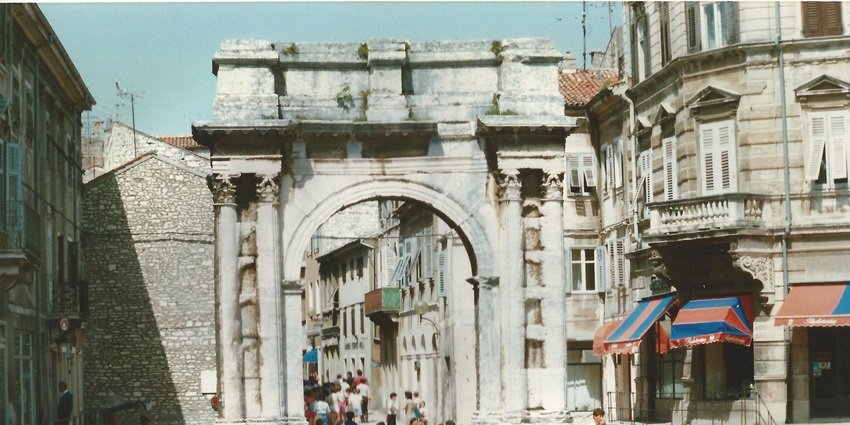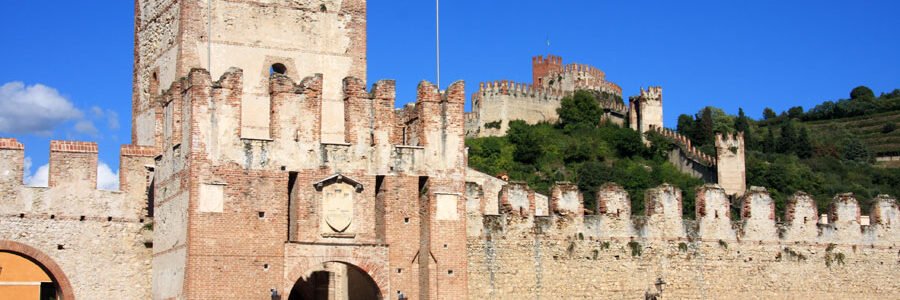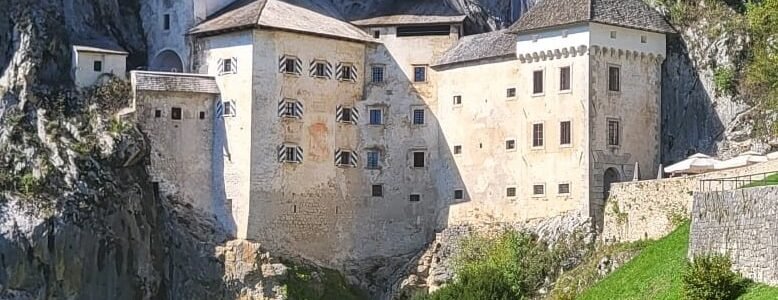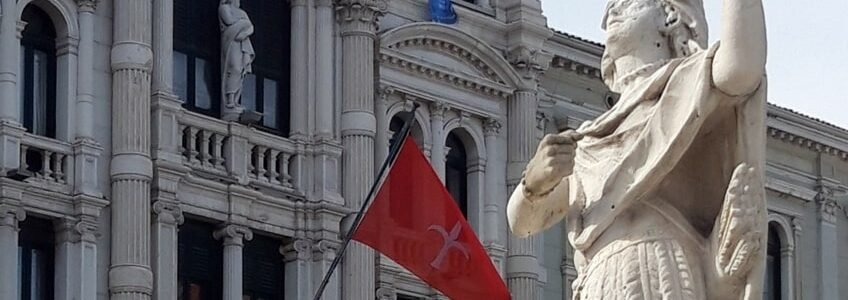Pula on Foot
Start Where the Locals Do
No one rushes in Pula before 9 a.m. The market in the city center opens earlier, but most of its visitors-especially the ones not checking into Airbnbs-arrive closer to 8. Pensioners hold plastic bags rolled tight in their pockets. Butchers stack paper between pork chops like it’s origami. Fish vendors yell only if it’s needed. If you want to walk Pula like it’s lived in, this is your start. Grab bread still warm from the bakery near the east entrance. Don’t plan the day-just move.
Between Stone and the Sea
Old Pula is compact, but you wouldn’t know that by how long it takes to cross. It’s not distance-it’s texture. Uneven stone, tilted shutters, small things to read and overhear. From the market, walk west-not to the Arena yet, but into the tangle of streets that smell like warm stone and anchovy brine. You’ll pass a staircase with no destination, a wall of vines, two cats that clearly rule this block. Follow the street that dips-where the wind picks up-and you’ll arrive at the port. No plaque announces it. Just fishing lines, bike tires, and salt.
The Arena is a Shortcut
It sounds strange until you do it: walk through the Arena. Locals rarely stop. The outside wall is the photo. The inside is part of town. You don’t need a ticket to stand on the edge and peer across the empty stage. Most days, seagulls use it more than people. If the gates are open, cut through and exit near the eastern arch. You’ll find a shaded bench no guidebook marks, but someone’s grandmother sits there daily, counting busses. If not, circle it slowly, and count the tourists posing. That’s also part of the rhythm.
Wrong Turns Are the Plan
There’s no single way to walk Pula. Locals drift. Some cut left after the library to find shade behind the fortress. Others take the long way down Kandlerova Street to pass the antique store with two clocks that haven’t moved in a year. Some follow smell alone: grilled sardines near the harbor, coffee in small glass cups, skin cream and sea air. One route winds you up to a terrace over the Forum, but no one tells you it’s there. Someone just says, “turn where the concrete ends.” It’s good advice.
Cross the Neighborhoods That Don’t Try to Impress
After the city center, most visitors curve back toward the sea. But if you follow Flanaticka ulica instead, you enter a part of Pula where balconies sag and laundry hangs low. It’s not ugly-just used. This is where teenagers meet in front of Konzum and argue in dialect. You’ll find bakeries where receipts are optional and shoe stores that haven’t changed inventory in five years. Eventually, the sea will reappear. But first, the city stretches its elbows a bit-shows you the parts no postcard features, and no tour groups pause to photograph.
Walking is How You Meet the Water
No matter where you turn inland, you’ll end up at the sea. Not all shores are beaches. Some are just stone drops with rusted ladders. That’s the point. Walk south past Valkane and you’ll see locals in work shirts and flip-flops walking home soaked from a swim. Follow them. They’re not hiding secret coves-they’re walking to the sea like it’s the corner store. A good stop is near Zelenika: flat rocks, no music, just shade and salt. Perfect for sitting with feet in the water and bread from earlier still in your bag.
Moving Without Needing a Plan
One strength of Pula is that it doesn’t require a strategy. The city is too layered for that. What matters is pace. Locals walk slower not from leisure but from habit. A crosswalk wait is a pause, not a delay. A detour is a chance to greet someone you didn’t plan to see. You don’t follow signs. You follow dogs, kids, the breeze.
When You Need to Leave, Locals Know How
Not every walk ends in Pula. When it’s time to head out, most locals arrange a pickup from home or hotel—no terminals, no lines, no second guesses. The ride crosses borders quietly, without any of the usual transfer headaches. If you’re flying from main Slovenia airport, this door-to-door service from Pula to Ljubljana Airport works just as easily.
Where Locals Stop for the Day
Evenings in Pula begin with movement, not sitting. People head out again: to the coast, to the playground, to buy cigarettes they don’t plan to smoke. A small café under a pine tree near Stoja fills with regulars. You’ll know it by the way they don’t look at the menu. Children run between chairs with scraped knees and ice cream. Across town, others watch the sunset from cement blocks above Valkane – no drinks, no selfies. Just people being outside, after a day on their feet. Not everything here needs a name.
Markets That Don’t Advertise
Maribor’s tržnica isn’t just where people buy vegetables – it’s where they ask about each other’s kids, trade cooking tips, and comment on the weather like it matters. The cheese vendor wraps things like it’s a gift. The woman selling herbs doesn’t raise her voice, even when the line grows. These markets aren’t curated or aesthetic – they’re used. The fruit isn’t polished. The eggs come with feathers. Locals know when to show up – not for the prices, but for the quiet feeling that nothing here is pretending.
Where Sound Carries Differently
Maribor isn’t silent, but it’s careful with noise. In the afternoons, the old town seems to pause. The sound of a bike wheel, a door creaking, a short exchange in dialect – they echo in a way they don’t in bigger cities. Locals don’t fill spaces just to fill them. There’s room to think, even on a bench near a playground. A man reads the paper aloud to his dog. Someone tunes a violin in a third-floor apartment. It’s not a city of spectacle. It’s a city of moments that stay with you.
For Real-Time Info and Local Tips
Opening hours change, bus routes reroute, and festivals pop up unannounced. For current details and what’s open when, reliable and autothorised spot is Official Pula tourism site – it’s kept updated by people who live here and walk these streets too.
One Walk is Enough
You can walk ten kilometers and never leave the old part of town. Or you can walk one, and feel like you’ve seen the city clearly. Pula doesn’t ask for coverage – it asks for attention. Whether it’s your first time or your tenth, the route that forms beneath your feet will never quite be the same. And that’s the point.
Pula on Foot
Pula on Foot means slowing the pulse to the rhythm of worn stones and whispering tides. The Roman amphitheater greets you at sea level, but the real discovery starts where cars don’t. Every corner of the old town is within reach when the streets become your guidebook.
There’s a quiet kind of logic to exploring Pula this way — one that doesn’t follow traffic lights or timetables, but instincts and salt in the air.
- Transfer from Ljubljana Airport to Pula
- Direct ride from Ljubljana to Pula
- Vienna to Pula route by car
- Travel from Pula to Graz
- Pula to Bled private transfer
- Pula to Venice by road
Pula on Foot Begins Where the Pavement Ends
- Ideal for travelers avoiding rental cars
- Fast transfer options for short stays
- Walkable access to key sites and beaches
- Suitable for families and casual walkers
- Custom pickup timing on request
Sometimes, History Sounds Like Footsteps
Pula on Foot is how stories stay between the stones
Official walking routes, maps, and updated access tips are available on this trusted local source.
RECENT POSTS
- Split in a Day June 26, 2025
- Tastes of Opatija June 26, 2025
- Pula on Foot June 26, 2025





























































Leave a Comment